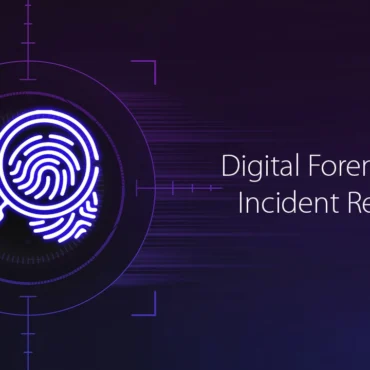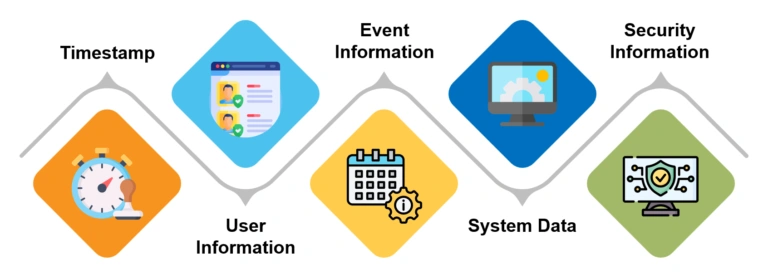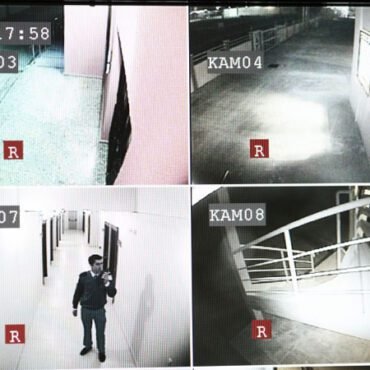Introduction
In today’s interconnected digital world, cyberattacks and security breaches have become a constant threat to individuals, businesses, and governments. Every activity that happens within a computer system or network—whether legitimate or malicious—leaves behind traces. These traces are often stored in log files, which act as a digital diary of system activities.
For cyber forensic investigators, log file analysis is one of the most powerful techniques to uncover cybercrimes, reconstruct attack timelines, and attribute malicious actions to threat actors. Logs provide a detailed trail of events, from login attempts to network traffic, enabling forensic professionals to understand what happened, how it happened, and who may be responsible.
What Are Log Files?
A log file is a system-generated record that contains time-stamped information about events happening within a device, application, or network. Logs are typically stored as text files and are automatically created by operating systems, applications, servers, and security devices.
Some common types of log files used in forensic investigations include:
-
System Logs: Document operating system events such as startup, shutdown, user login/logout, and hardware errors.
-
Security Logs: Capture security-related events like failed login attempts, unauthorised access, or privilege escalations.
-
Application Logs: Record activities inside software applications (e.g., email servers, databases, or antivirus programs).
-
Network Logs: Provide details on traffic, IP addresses, and communication between devices, collected by routers, firewalls, or IDS/IPS systems.
-
Web Server Logs: Track user activity on websites, including pages visited, browser types, and access times.
These logs serve as digital footprints, helping investigators piece together how a cyber incident unfolded.
Importance of Log File Analysis in Cyber Forensics
Log file analysis is critical in cyber forensic investigations for several reasons:
-
Incident Detection – By analysing logs, investigators can spot anomalies such as unusual login times, abnormal traffic, or repeated failed login attempts that indicate malicious activity.
-
Timeline Reconstruction – Logs help establish the sequence of events, showing what occurred before, during, and after an attack.
-
Attribution of Cybercrimes – IP addresses, user accounts, and system IDs recorded in logs provide clues to link actions to individuals or groups.
-
Regulatory Compliance – Many industries require log monitoring and retention to comply with standards like HIPAA, GDPR, and PCI-DSS.
-
Legal Evidence – Properly preserved log files are admissible in court and can provide irrefutable proof of cyber incidents.
The Process of Log File Analysis in Cyber Forensics
Conducting log file analysis in forensic investigations follows a systematic process:
-
Collection – Securely gathering log files from systems, servers, and security devices while ensuring integrity.
-
Preservation – Using hashing and chain-of-custody documentation to protect logs from tampering.
-
Parsing & Normalisation – Converting raw log data into structured, human-readable formats using forensic tools.
-
Correlation – Cross-matching logs from multiple sources (e.g., firewall + web server + OS) to identify patterns of attack.
-
Filtering & Prioritisation – Reducing noise by focusing on relevant entries among millions of log lines.
-
Analysis & Interpretation – Identifying suspicious behaviour, unauthorised access, or abnormal activities.
-
Reporting – Documenting findings in a structured report that can be used in legal proceedings.
Popular Tools for Log File Analysis
Cyber forensic investigators rely on specialised tools to analyse logs efficiently:
- Wireshark – Used for analysing network traffic and packet logs.
-
Graylog – A centralised log management system for IT security monitoring.
-
X-Ways, EnCase, FTK – Advanced forensic suites that include log parsing and evidence correlation features.
The choice of tool depends on the type of logs, scale of analysis, and complexity of the investigation.
Real-World Applications of Log File Analysis
Log file analysis plays a key role in solving real-world cybercrime cases. Some examples include:
-
Malware Investigations – Logs help detect abnormal processes, file modifications, or communication with command-and-control servers.
-
Insider Threat Detection – Tracing unauthorised database access or file downloads by employees.
-
Ransomware Attacks – Identifying how attackers gained access, when encryption started, and which files were affected.
-
Phishing Investigations – Following email server logs to trace malicious emails and compromised accounts.
-
Financial Fraud – Detecting unusual login attempts or fund transfers through banking application logs.
Conclusion
In cyber forensics, log files act like black box recorders of digital systems. They preserve the truth about user activities, system events, and network interactions. Through careful collection, preservation, and analysis, forensic experts can uncover hidden evidence, reconstruct attack timelines, and present findings that stand up in court.
While challenges such as large data volumes and log tampering exist, advancements in forensic tools and AI are making log file analysis more efficient and reliable. For organisations, regularly monitoring and maintaining logs is not just a security best practice—it is a critical step in safeguarding against cybercrime and ensuring accountability.





Post comments (0)